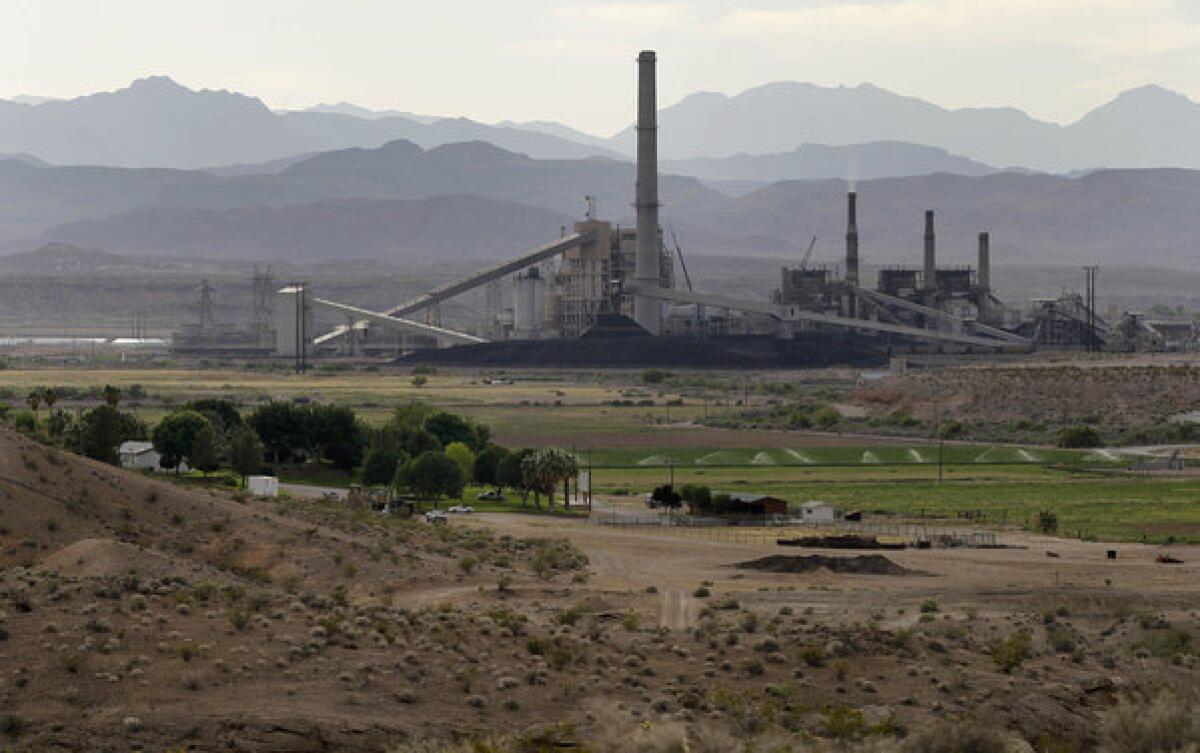New air pollution standards restrict soot particles

WASHINGTON — The Obama administration announced a new air pollution standard Friday that would bring about a 20% reduction in microscopic particles of soot emitted by coal-fired power plants and diesel vehicles that contribute to haze and respiratory ailments.
The new limit, fought by industry and welcomed by environmentalists, marks the first time the Environmental Protection Agency tightened the soot standard since it was established 15 years ago.
“These standards are fulfilling the promise of the Clean Air Act,” said EPA Administrator Lisa P. Jackson. “We will save lives and reduce the burden of illness in our communities, and families across the country will benefit from the simple fact of being able to breathe cleaner air.”
Fine particles from burning fossil fuels can penetrate deep into the lungs and lead to heart attacks, acute asthma and premature death, according to the EPA. The new limit that the EPA set for an annual average of airborne fine particles in a given jurisdiction is 12 micrograms per cubic meter, down from 15 micrograms, a standard established in 1997.
The new standard will have a particular impact on California, due to problems from the burning of diesel fuel. According to the EPA’s regional office of the Pacific Southwest, seven California counties may not meet the new standard by 2020: Los Angeles, Riverside, San Bernardino, Imperial, Kern, Merced and Tulare. Still, over the last decade, soot levels have been cut by almost 50% in the Los Angeles area and almost 30% in the San Joaquin Valley, the office said.
Industry attacked the standard as onerous and of dubious benefit to public health — and a sign of more regulation in the future.
“We fear this new rule may be just the beginning of a ‘regulatory cliff’ that includes forthcoming ozone rules, the refinery sector rules, pending greenhouse gas regulations for refineries,” said Howard Feldman, director of regulatory and scientific affairs at the American Petroleum Institute, the oil industry’s main lobby. “It makes no sense to risk economic harm when the public health necessity of these regulations is ambiguous at best.”
Recent research by the Harvard School of Public Health has shown that reducing fine particle pollution even by small amounts can lead to an increase in life expectancy.
The EPA estimated that by 2030, the reduction in soot “from diesel vehicles and equipment alone” could prevent up to 40,000 premature deaths and 4.7 million days of work lost due to illness. The agency estimates that it would cost industry $53 million to $350 million annually to comply with the new standard. But it estimated the annual savings in healthcare and other costs to be around $4 billion to $9.1 billion.
Right now, 99% of U.S. counties are in compliance with the new standard, the EPA said. Of the remaining, many of them will be in California, the EPA said. States have until 2018 to submit their plans to meet the new standards and then until 2020 to comply. Moreover, they could ask for an extension until 2025 “depending on the severity of an area’s fine particle pollution problems and the availability of pollution controls,” the EPA said.
The new soot limit is the result of a lawsuit brought by several East Coast states, led by New York, against the EPA. Soot pollution in the East is largely from coal-fired plants. California’s high levels of soot can be traced to diesel-fueled transportation on its roads and its ports, which can make it harder to meet the new standards.
Paul Cort, a California-based lawyer with the environmental law and advocacy group Earthjustice, said in an email, “We don’t have coal power plants in California. The big targets will have to include transportation — trucks, ports, trains — but even that will probably not be enough. These areas are going to have to really look across all industries to find the pollution reductions (a little here, a little there) that will be needed to meet this new standard by the deadline of 2020.”
More to Read
Sign up for Essential California
The most important California stories and recommendations in your inbox every morning.
You may occasionally receive promotional content from the Los Angeles Times.











